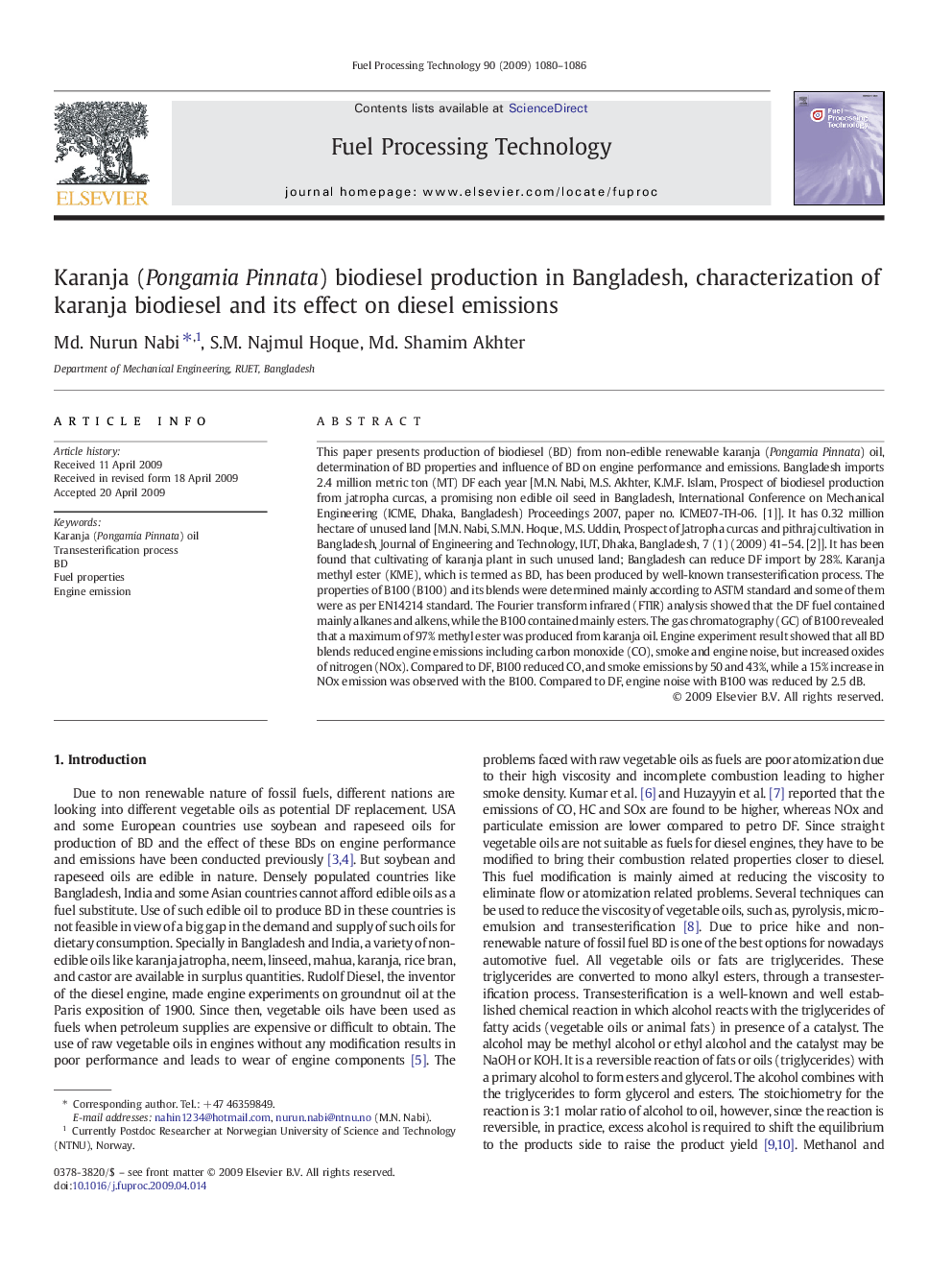| Article ID | Journal | Published Year | Pages | File Type |
|---|---|---|---|---|
| 211020 | Fuel Processing Technology | 2009 | 7 Pages |
This paper presents production of biodiesel (BD) from non-edible renewable karanja (Pongamia Pinnata) oil, determination of BD properties and influence of BD on engine performance and emissions. Bangladesh imports 2.4 million metric ton (MT) DF each year [M.N. Nabi, M.S. Akhter, K.M.F. Islam, Prospect of biodiesel production from jatropha curcas, a promising non edible oil seed in Bangladesh, International Conference on Mechanical Engineering (ICME, Dhaka, Bangladesh) Proceedings 2007, paper no. ICME07-TH-06. [1]]. It has 0.32 million hectare of unused land [M.N. Nabi, S.M.N. Hoque, M.S. Uddin, Prospect of Jatropha curcas and pithraj cultivation in Bangladesh, Journal of Engineering and Technology, IUT, Dhaka, Bangladesh, 7 (1) (2009) 41–54. [2]]. It has been found that cultivating of karanja plant in such unused land; Bangladesh can reduce DF import by 28%. Karanja methyl ester (KME), which is termed as BD, has been produced by well-known transesterification process. The properties of B100 (B100) and its blends were determined mainly according to ASTM standard and some of them were as per EN14214 standard. The Fourier transform infrared (FTIR) analysis showed that the DF fuel contained mainly alkanes and alkens, while the B100 contained mainly esters. The gas chromatography (GC) of B100 revealed that a maximum of 97% methyl ester was produced from karanja oil. Engine experiment result showed that all BD blends reduced engine emissions including carbon monoxide (CO), smoke and engine noise, but increased oxides of nitrogen (NOx). Compared to DF, B100 reduced CO, and smoke emissions by 50 and 43%, while a 15% increase in NOx emission was observed with the B100. Compared to DF, engine noise with B100 was reduced by 2.5 dB.
